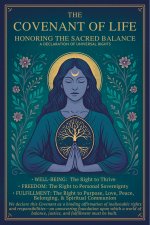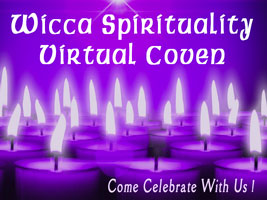Brigid: Goddess of the Flame
and of the Well

|
|
|
|
|
Who Is the Pagan Goddess Brigid?
"I am older than Brighid of the Mantle*...
"I put songs and music on the wind before ever the bells of the chapel
were rung in the West or heard in the East. ...
into the hearts of men and women like a flame upon dry grass,
like a flame of wind in a great wood..."
~ Winged Destiny by Fiona MacLeod (William Sharp: 1855 –1905)
*ie, the Christian St. Brigid
As a Celtic Goddess of flame, Brigid is a Sun Goddess, Goddess of the Dawn. (To the Celts, the Sun was feminine, and Light was masculine.) She is also the Goddess of the Well and the Waters. In other words (although I've never heard anyone say this, it seems obvious to me), She is Goddess of both Sun and Moon, action and inspiration, achievement and creativity. She offers us all the gifts of the Sun and the Moon: beauty, inspiration, knowledge and skill, access to the divine realm, healing, and life itself. The spark of inspiration, the muse of all creativity, Brigid is the Goddess of...
- poets,
- musicians and singers,
- storytellers,
- scholars and teachers,
- artists, trades persons, and artisans, especially metalsmiths
- healers and herbalists,
- magick-workers,
- seers and prophets.
Pronunciation Guide
Her name would originally have been pronounced BRIGG-id or BREE-id or BREE-deh.
However, in modern Wiccan circles, She is usually called BRIDGE-id.
Other names for Her are Brid / Bride / Bridhe (pronounced 'breed'), Brigantia, Bridgid, Brighid, Brigit, or Bridget.
Her name means "exalted one," "lofty or elevated one," "She who is on high."
She is famed for Her green mantle (ie, cloak), which protects all who shelter beneath it.
Yet She is also known as a Warrior Goddess.
I found it hard to reconcile Brigid as a Goddess of warriors, considering all Her other attributes and associations, until I thought of Her as the Mother Bear archetype, who is fierce and ruthless in the protection of Her children. She is known as a protector of women and children. So I think it's likely that She's been mislabelled a Warrior Goddess because that kind of passionate protection has been misunderstood in an era of violence and domination.
It is She, as William Sharp says so poetically:
"Whom the Druids held in honour as a torch bearer of the eternal light, a Daughter of the Morning, who held sunrise in one hand as a little yellow flame, and in the other held the red flower of fire without which men would be as the beasts who live in caves and holes….
"[The] one whom the bards and singers revered as mistress of their craft, she whose breath was a flame and that flame song; ... "She herself and no other, is ... that ancient goddess whom our ancestors saw lighting the torches of sunrise on the brows of hills, or thrusting the quenchless flame above the horizons of the sea; whom the Druids hailed with hymns at the turn of the year, when, in the season we call February, the firstcomers of the advancing spring are to be seen."The Return of Bride
Brigid has many names and titles. One of the most evocative is "Two-Faced." She is described as being light and beautiful on one side of Her face, and black and ugly on the other. This, I believe, points to a more ancient perspective on this ancient Pagan Goddess, where She is not only the Goddess of the warm season but the Goddess of the entire year (in other words, the Earth Goddess). In one season, She shows her warm smiling face, and in the other season, She shows her cold remote face. (Remember, Celtic culture saw the year as broken into 2 seasons — Summer and Winter — not 4 as we do today.) There is an ancient tale that points to the transformation of the Cailleach, the Crone of Winter, into the Maiden of Spring. It's called The Return of Bride. (Link will open in a new window, so you can read the story if you like and then close the window to return here.) (This story, by the way, also ties in to the celebration of Groundhog Day, which you can also find out about on the same page.) So we see that She is the Goddess of the Sun and of the Moon, of Winter and of Summer, of Fire, Water, Air and Earth. Putting all the pieces together, we can see that Brigid was originally a Great Goddess, Queen of Heaven, the All-Mother.Brigid's Herstory
It is told that Brigid is the daughter of the Earth God Dagda. She was born with the sunrise, and elevated into the sky with rays of light radiating from Her head. She was nourished as a babe on the milk of a sacred cow. It is also said that wherever She walks, flowers and shamrocks spring up in Her footsteps. She has an apple orchard in the Otherworld, and her sacred bees travel back and forth, carrying the magickal nectar to the Earth. There is some evidence that Brigid may pre-date even Celtic religion. The stones of monuments such as Stonehenge are known as Bridestones, and if that name dates back to the creation of the henges, it indicates that perhaps She was worshipped 5ooo years ago or more.The Demotion to Saint Brigid
In Ireland and other Celtic countries, Brigid was a primary Pagan Goddess. As you might imagine, this didn't sit well when Christianity took over. But the people were unwavering in their devotion to this Goddess, and the Christian fathers couldn't eradicate Her worship. So they did what has worked so well throughout the ages and around the globe: they incorporated Her into their own mythology. In the 5th Century, She was remade as a Christian saint. She was given a fictitious history, and canonised. (Then in 1960, I guess the Church thought they'd made a mistake, and de-sainted Her! Or maybe they thought they could at last do away with this so-tenacious and beloved female deity.)The Eternal Flame & Sacred Well
Near Kildare, Ireland, close to an ancient sacred Oak tree and surrounded by a hedge which no man could cross with his health, sanity, or life intact, Brigid's holy well and eternal flame were honoured for time out of mind. Her Eternal Flame was tended for many hundreds or perhaps thousands of years by 19 priestesses ... and when She became St Brigid, by 19 nuns for more than a millennia! (Her sacred number is 19 — see the symbolisms below for an explanation.) Each tended the fire for a single day, in rotation, and the 20th day it was said that the Goddess miraculously tended the fire Herself. This continued without interruption until 1220 CE, when a Bishop took offense to the ban of men from Her well, and ordered that the Flame be extinguished. But it was relit and sustained until the 1500's. With the resurgence of Paganism and reverence for the Goddess, Her holy Flame was relit in 1993 by the Daughters of the Flame, and now burns once again. She has holy wells dedicated to Her all over Gaelic lands, some sacred for perhaps thousands of years, receiving gifts of flowers, rings, silver, and coins. This is the root of the modern practice of throwing pennies into fountains and making a wish — it was said that Brigid rewards those who make offerings to Her. Next time you toss a penny into a fountain, you can send your prayer directly to the Goddess of the Well! Her flame may be extinguished from time to time, but it can never die... not as long as the Goddess is honoured in our hearts. "Victorious" was one of Her titles. She can never be truly defeated. People still make pilgrimages to Brigid's Eternal Flame and Holy Well. The waters of these sacred wells are said to be miraculously healing.Brigid, the Wiccan Goddess
As a Pagan Goddess, Brigid is very important in Wicca. She gives us inspiration, deep wisdom, divination, healing and midwifery, peace, abundance, working in harmony with the Earth to sustain life, and creative expression. She offers the power of music and magick, prophecy and dreams. She is a personification of love and compassion, and the power of women. These are all values that touch most Wiccans very deeply. She is also representative of the Divine Feminine, the Great Mother Goddess — and the veneration of the Great Goddess is central to Wicca. She has been called a Triple Goddess, though not in the same way that Wiccans generally use the title — She is not a trinity of Maiden, Mother, and Crone. (Although I would say that as Moon Goddess, Spring Goddess, Earth Goddess, and Winter Goddess, She does fit this model as well.) The ancient Celts, however, saw Her as "divided" by spheres of influence...- Fire of the Forge: Goddess of the arts and handicrafts — especially metalworking, justice, and war.
- Fire of the Hearth: Goddess of home-life, childbirth, fertility, animal husbandry, farming, herb craft, and healing.
- Fire of Inspiration: Goddess of poetry, prophecy, song, storytelling, music, language, education
Her Symbols and Associations
- Wells and springs
- Sun
- Light, fire, candles, etc
- Spear or Arrow (especially of light, sign of solar rays)
- Hearth fire
- Sparks
- Sudden flames
- Sunshine and sunrise
- Brighid's Cross (a solar symbol)
- Forges
Activities
- Poetry
- Music and song
- Storytelling
- All arts and crafts
- Metalworking
- Whistling
- Knowledge
- Learning and teaching
- Healing and healers
- Medicine and herb-craft
- Midwives
- Childbirth
- Motherhood and child-rearing
- Home tending
- Farming and flock/herd-tending
- Bee keeping
- Magick
- Divination and prophecy
Creatures
- Swan
- Goose
- Dairy cows
- Ewes and lambs
- Serpents (especially intertwined)
- Bees
- Owls
- Linnets
- Oystercatchers
- Hibernating animals
- Vultures
Plants
- Hawthorn
- Shamrocks
- Meadow flowers
- Spring flowers such as snowdrops and crocus
- Sprouts
- Dandelion
- Trillium
- Heather
- Grains, especially corn and oats
- Violet
- Wisteria
- Blackberry
Metals & Stones
- Gold
- Brass
- Copper
- Silver
- Crystal
- Red or blue stones
Colours
- White
- Yellow
- Red
- Dark blue
Other Symbols
- Harp
- Brigid's Cross (Eye of Bridgid)
- Brigid's Knot
- Triple Spiral
- Cauldron
- Stone megaliths (such as at Stonehenge)
- Green cloak (mantle)
- Milk
- Bells
- Thresholds and entryways
- All heights, objects on high, and high places
- The number 19 — Brighid's sacred number (There is a nineteen-year cycle the Celts called the Great Year, because every 19 years the solar and lunar calendars come into accord — again identifying Brigid with the rhythms of both Sun and Moon.)
- Home life
- Spring
- Corn dollies
- Fertility, especially of crops and livestock
Related Goddesses
- Cerridwen (Welsh)
- Athena (Greek)
- Minerva (Roman)
- Saraswati (Hindu)
- Isis and Hathor (Egyptian)
- Astarte (Phoenician)
- Ishtar (Babylonian and Assyrian)
Fire & Water
With Brightest Blessings,
erin Dragonsong

Return from
Wiccan Gods and Goddesses










